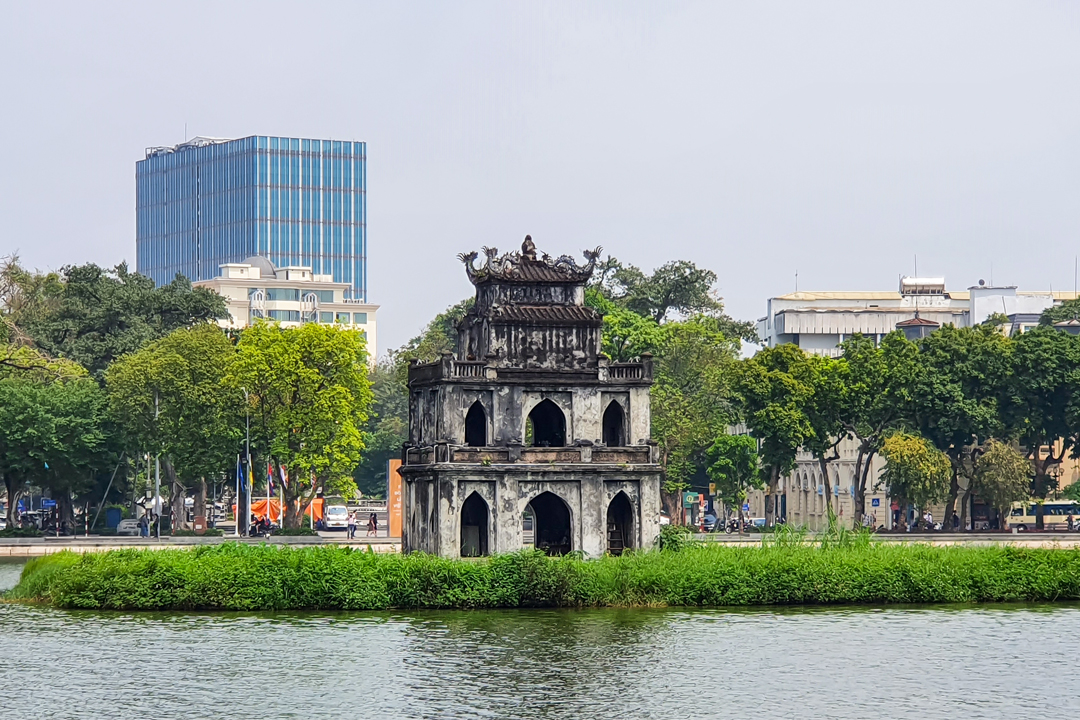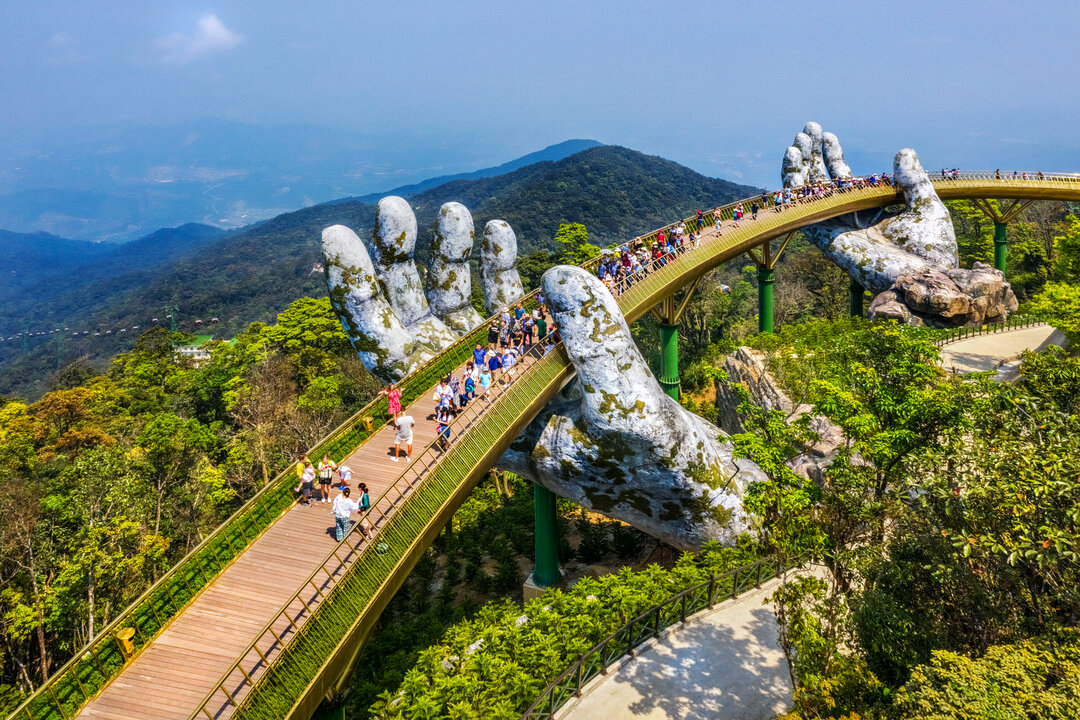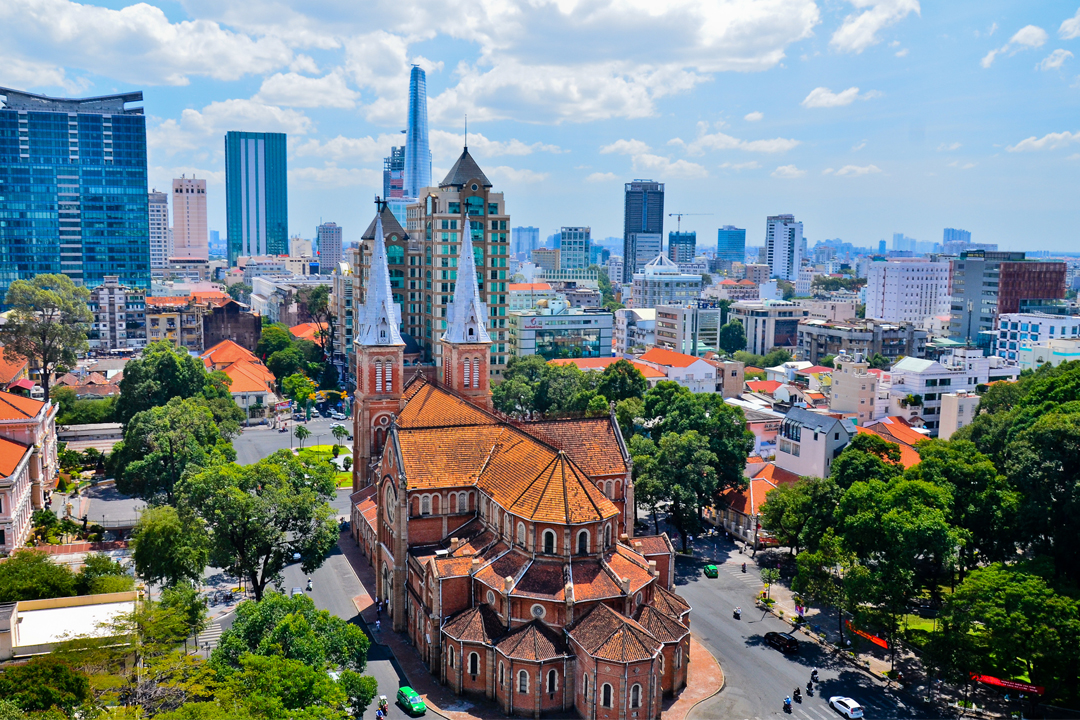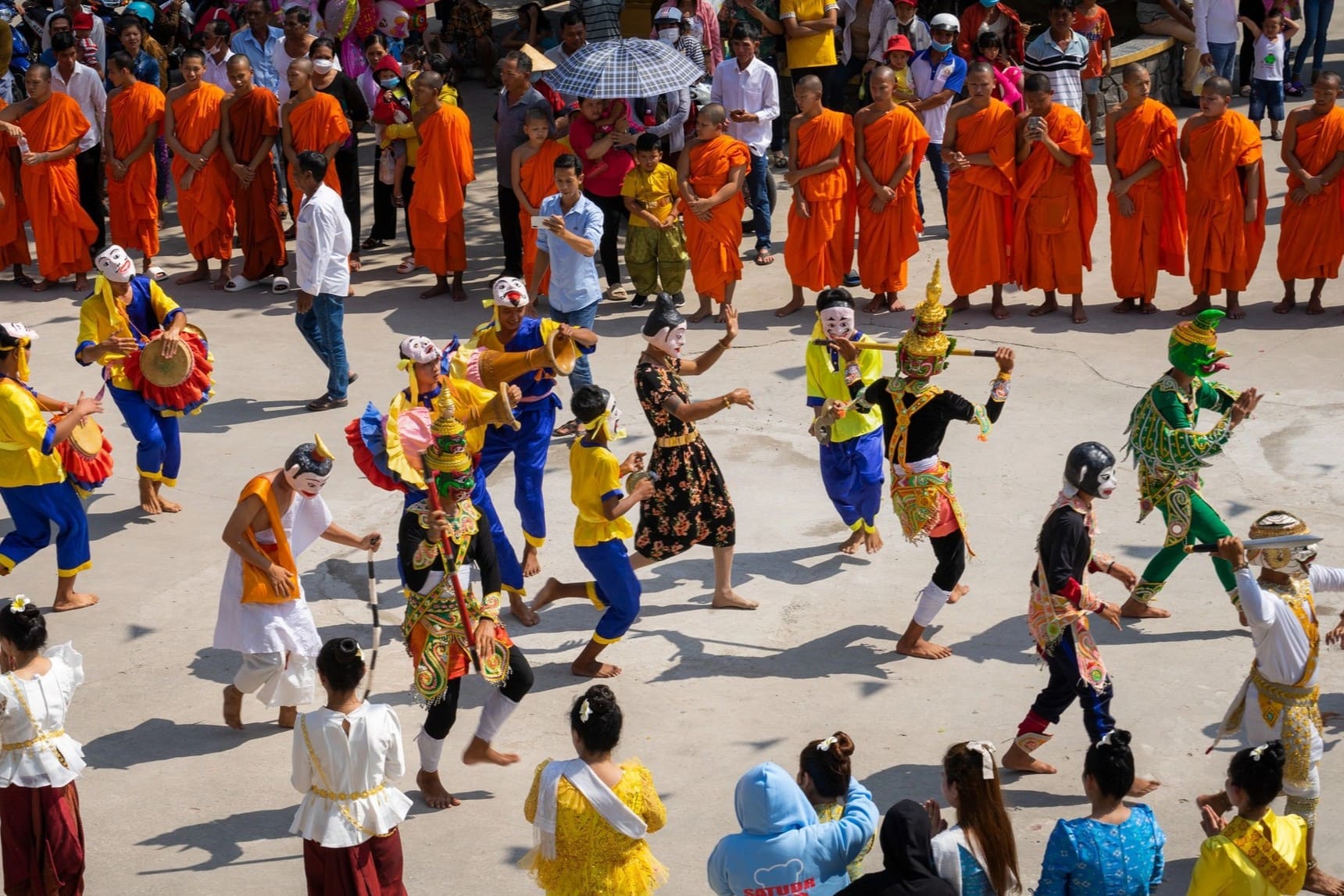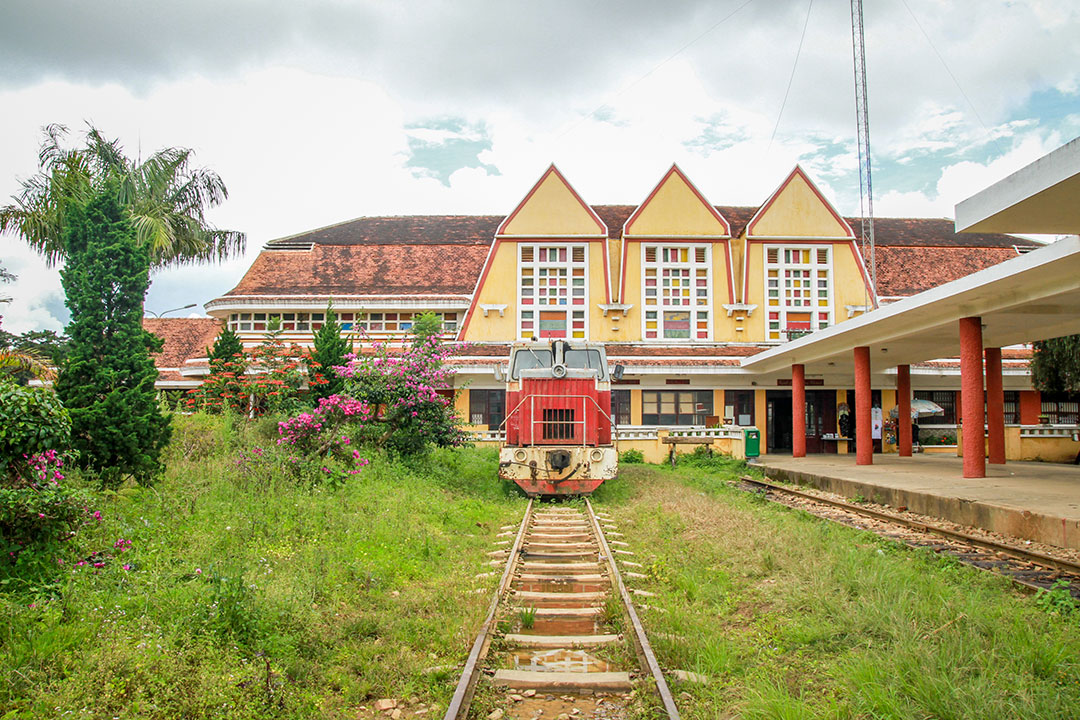Dalat Train Station: History, Architectural, How To Get To & Things To Do
Dalat Train Station is a striking symbol of Vietnam’s colonial past, blending history, architecture, and scenic railway experiences into one captivating attraction. This historic railway hub, known for its French-influenced design, is not just a transportation point but a landmark that narrates the evolution of Dalat railway history. The station carries stories of the past while offering tourists a glimpse into Vietnam’s unique rail heritage.
For those fascinated by Vietnam’s colonial train stations, Dalat Train Station showcases distinctive architectural features, with its Art Deco-style facade, steep triangular roofs, and vintage locomotives. Walking through the station, you can admire intricate details reminiscent of European railway structures, making it one of the most notable cultural landmarks in the region.
Beyond its historical allure, the station serves as the departure point for the Dalat scenic train ride, a short yet picturesque journey that winds through breathtaking highland landscapes. Travelers can immerse themselves in Dalat’s natural beauty while enjoying a nostalgic ride aboard a vintage train. Around the station, there’s plenty to explore, from nearby cultural sites to local eateries offering authentic Vietnamese flavors.
This guide of GTrip covers everything you need to know about how to get to Dalat Train Station, its best visiting times, available facilities and services, and nearby must-see attractions. You’ll also find answers to frequently asked questions, such as ticket prices, operating hours, and whether guided tours are available. This station promises an unforgettable journey into Vietnam’s railway heritage.
Overview of Dalat Train Station
Dalat Train Station is situated at 1 Quang Trung, Ward 10, Dalat City. Dalat Train Station is a lively hub where tourists gather before setting off to explore the city. Just 3 kilometers from the city center, it’s easily accessible by motorbike or car, making it a convenient stop for travelers. Built during the French colonial period, this station was once a crucial part of the Dalat railway history, connecting the highland city to the coastal region. Today, it stands as a Vietnam heritage railway site, drawing tourists who appreciate its architectural beauty and historical significance.
Commissioned in the 1930s, the station was designed by French architects Moncet and Reveron, blending European Art Deco elements with traditional Vietnamese influences. The three sharp, triangular roofs symbolize the Langbiang Mountains, a defining feature of Dalat’s landscape. This distinctive design makes it one of the most visually striking train stations in Vietnam. Originally, the station was part of the 84-kilometer Dalat - Thap Cham railway, known for its rare cogwheel track system, which helped trains ascend the steep Central Highlands terrain. Although most of the original route was discontinued after the war, a short scenic section remains operational for tourists today.
The station itself is well-preserved, offering tourists a glimpse into its storied past. The interior still retains its vintage wooden furniture, antique ticket booths, and railway artifacts, allowing travelers to experience the charm of early 20th-century train travel. Outside, an old steam locomotive is on display, showcasing the engineering marvels of a bygone era. With just 50,000 VND/ticket, you can explore this beautiful historical attraction.
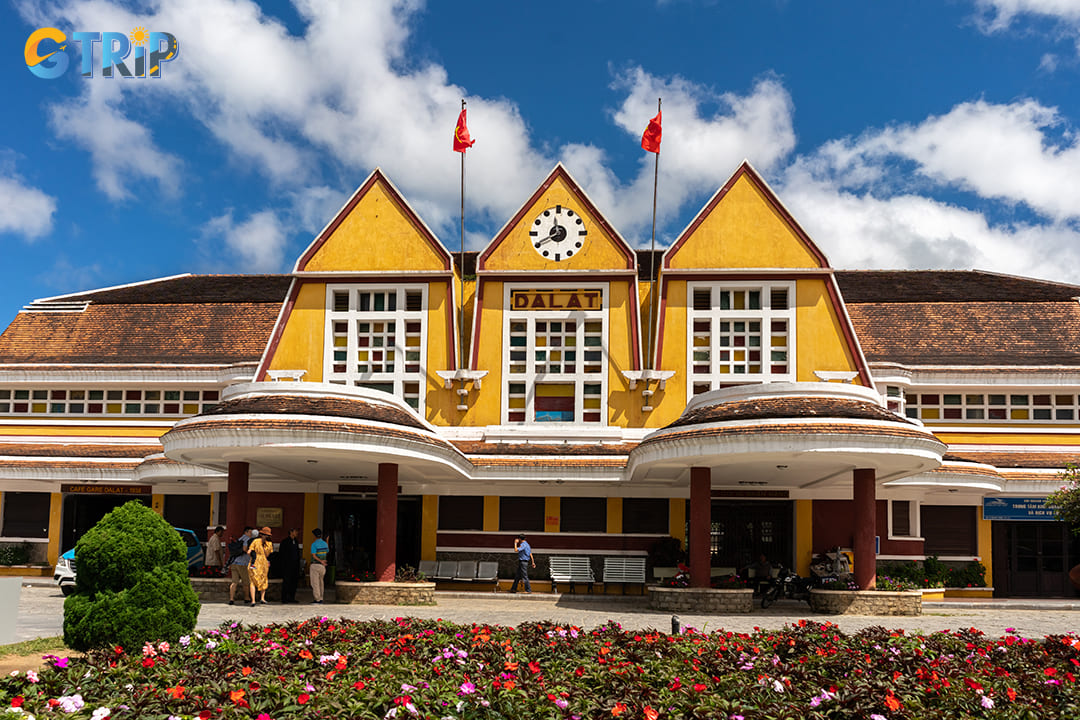
Dalat Train Station is a lively hub where tourists gather before setting off to explore the city
Timetable and ticket price:
| Train | Departure Time | Arrival Time |
|---|---|---|
| DL1 | 07:50 A.M | 08:20 A.M |
| DL3 (Everyday) | 09:55 A.M | 10:25 A.M |
| DL5 | 12:00 P.M | 12:30 P.M |
| DL7 | 02:05 P.M | 02:35 P.M |
| DL9 | 04:10 P.M | 04:40 P.M |
| DL11 | 06:15 P.M | 06:45 P.M |
| DL13 | 08:20 P.M | 08:50 P.M |
Ticket price:
- Single ticket: 60,000 - 180,000 VND/passenger
- Return ticket: 94,000 - 263,000 VND/passenger
Historical significance of Dalat Railway
The Dalat Railway stands as a remarkable testament to Vietnam's colonial past, reflecting both French architectural influence and the country's early railway expansion. Constructed during the early 20th century under French colonial rule, the railway was part of an ambitious project to connect Dalat with the coastal city of Phan Rang. Unlike many Vietnam colonial train stations, Dalat Train Station featured a cog railway system designed specifically to navigate the steep mountainous terrain. This makes it a rare and historically significant engineering feat.
A colonial legacy and strategic purpose
The Dalat Railway stands as a remarkable testament to Vietnam's colonial past, reflecting both French architectural influence and the country's early railway expansion. Commissioned in 1903 and constructed in phases before being completed in 1932, the railway was an ambitious project under French colonial rule to connect Dalat with Phan Rang. Designed by French architects Moncet and Revéron, the Dalat Train Station was an integral part of the Thap Cham-Dalat railway line, playing a key role in both administrative mobility and tourism.
With Dalat’s cool climate and scenic landscapes, the French saw the city as a retreat for high-ranking officials. The railway, spanning 84 kilometers, was specifically designed to navigate the rugged terrain of the Central Highlands. It incorporated a cog railway system, a rare engineering feat in Southeast Asia inspired by Swiss mountain railways. This allowed the trains to handle the steep inclines, making the Dalat railway unique among colonial train lines in Vietnam.
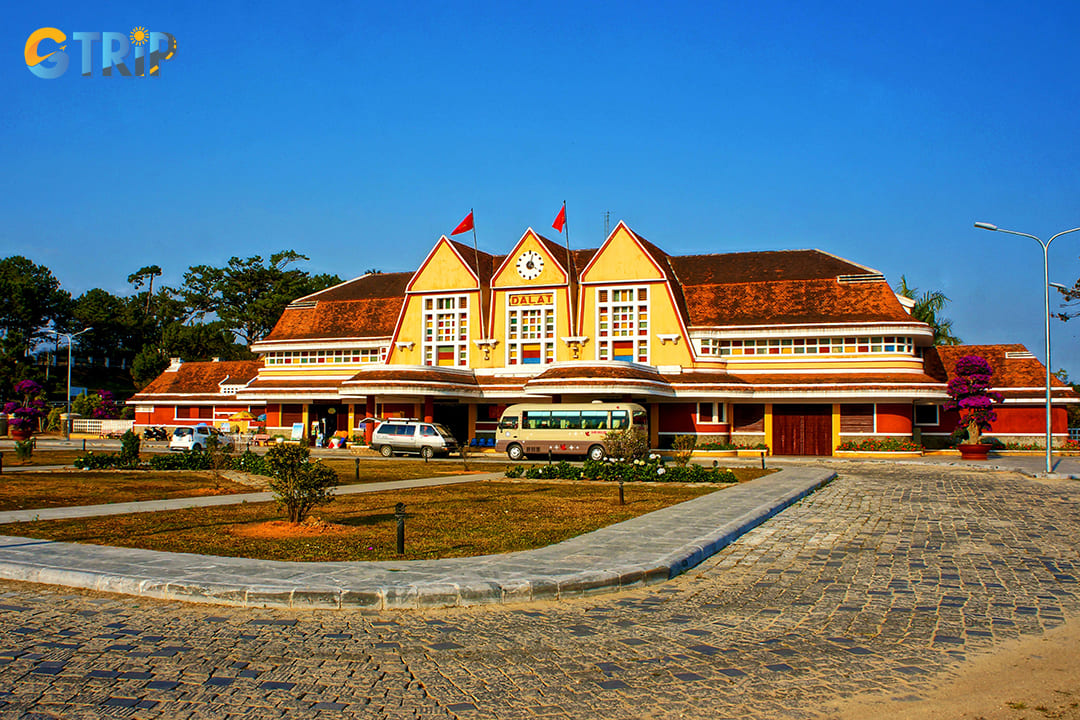
The Dalat Railway stands as a remarkable testament to Vietnam's colonial past
War and decline
The railway’s history is deeply intertwined with Vietnam’s turbulent past. During World War II, sections of the track were damaged by Japanese forces, and further destruction followed in the First Indochina War and the Vietnam War. By 1972, the railway was left in ruins, and after the country's reunification in 1975, efforts were made to restore the line. However, due to poor economic viability, the railway was eventually abandoned, leaving only a short segment operational for tourism between Dalat and Trai Mat.
Preserving the colonial architecture
Although most of the railway is no longer in use, the Dalat Train Station remains a well-preserved architectural landmark. It features a striking blend of Art Deco design and Vietnamese influences, with its facade inspired by the Normandy region of France. The station’s three triangular gables symbolize the Langbiang Mountains, making it one of Vietnam’s most visually distinctive train stations.
Today, you can explore the station’s vintage locomotives, restored railway tracks, and historical exhibits, offering a glimpse into a bygone era of travel. While the railway no longer serves its original purpose, its legacy endures as a historical and architectural icon of Dalat.
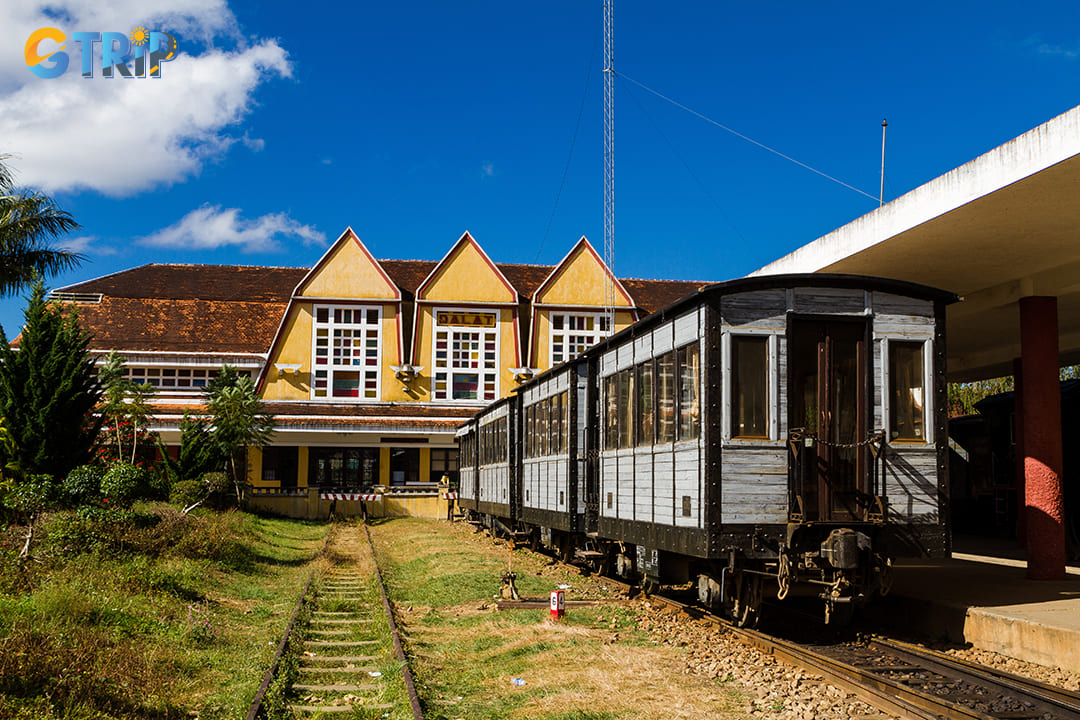
You can explore the station’s vintage locomotives, restored railway tracks, and historical exhibits
Architectural features of Dalat Train Station
Dalat Railway Station architecture is a striking blend of French colonial design and indigenous Vietnamese elements, making it one of Vietnam’s most distinctive railway stations. Designed in 1932 by French architects Moncet and Reveron, the station features a symmetrical facade with three sharp triangular roofs, representing the peaks of the Langbiang Mountains. The ochre-colored walls, adorned with Art Deco influences, complement the surrounding highland scenery, creating an architectural landmark that stands out in Dalat’s cultural landscape.
Inside, the station retains its original wooden benches, vintage ticket counters, and a manually operated turntable, evoking a sense of nostalgia for the golden era of railway travel. The large, arched windows allow natural light to flood the interior, enhancing the spaciousness and charm of the waiting area. People are often drawn to the antique locomotives and the short but scenic railway route to Trai Mat, which passes through lush pine forests and offers a glimpse of Dalat’s serene countryside.
Beyond its structural beauty, Dalat Train Station also serves as a gateway to nearby cultural attractions. A short distance away, the Prenn Waterfalls offer a refreshing escape with cascading waters surrounded by lush greenery. The Robin Hill cable car station provides panoramic views of Dalat’s misty valleys. For those interested in religious architecture, the Linh Phuoc Pagoda, with its intricate mosaics and towering dragon sculptures, is a must-visit site along the railway’s Trai Mat route.
With its fusion of colonial aesthetics and local influences, Dalat Train Station stands as a testament to Vietnam’s railway heritage. As you explore its architectural wonders, you will find yourself drawn to the surrounding attractions, making transportation a key aspect of planning a visit to this historic site.
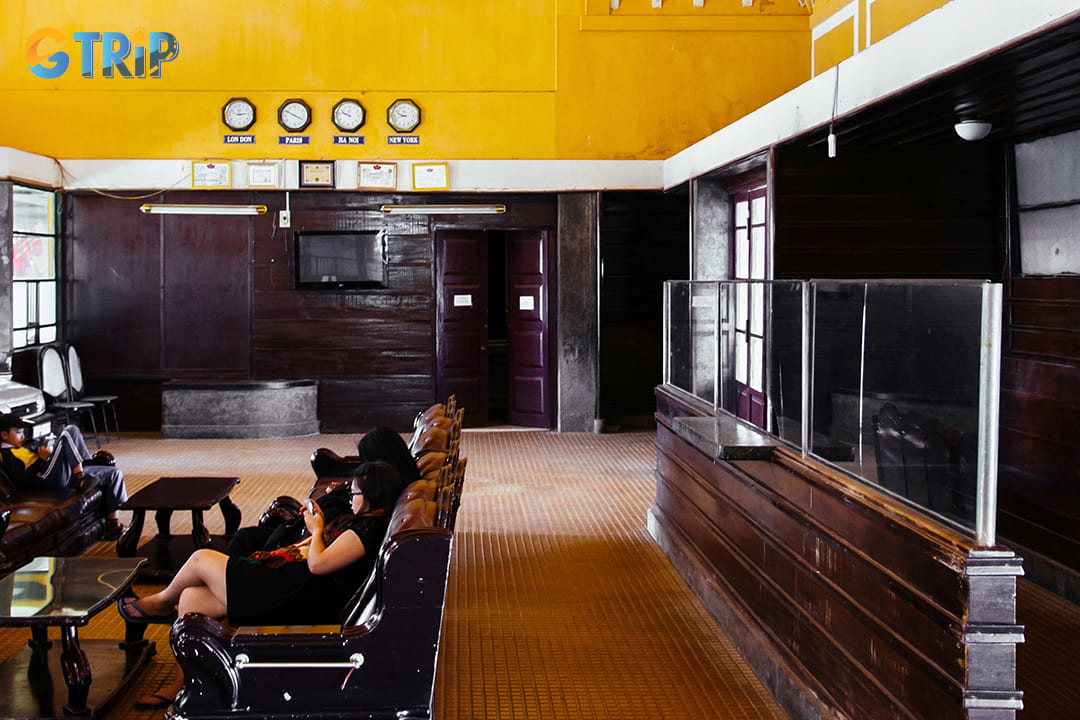
Inside, the station retains its original wooden benches, vintage ticket counters, and a manually operated turntable
Things to do in the Dalat Train Station area
Here are some activities that you can do when visiting this station in Dalat.
1. Take a scenic train ride
One of the main attractions near Dalat Train Station is the scenic railway journey to Trai Mat. This short yet captivating ride offers travelers a glimpse of Dalat’s picturesque landscapes, from lush pine forests to serene vegetable farms. The train follows a historic narrow-gauge track, reminiscent of the French colonial era, making the experience both nostalgic and visually rewarding. Be sure to bring your camera, as the train passes by some of Dalat’s most breathtaking countryside views.
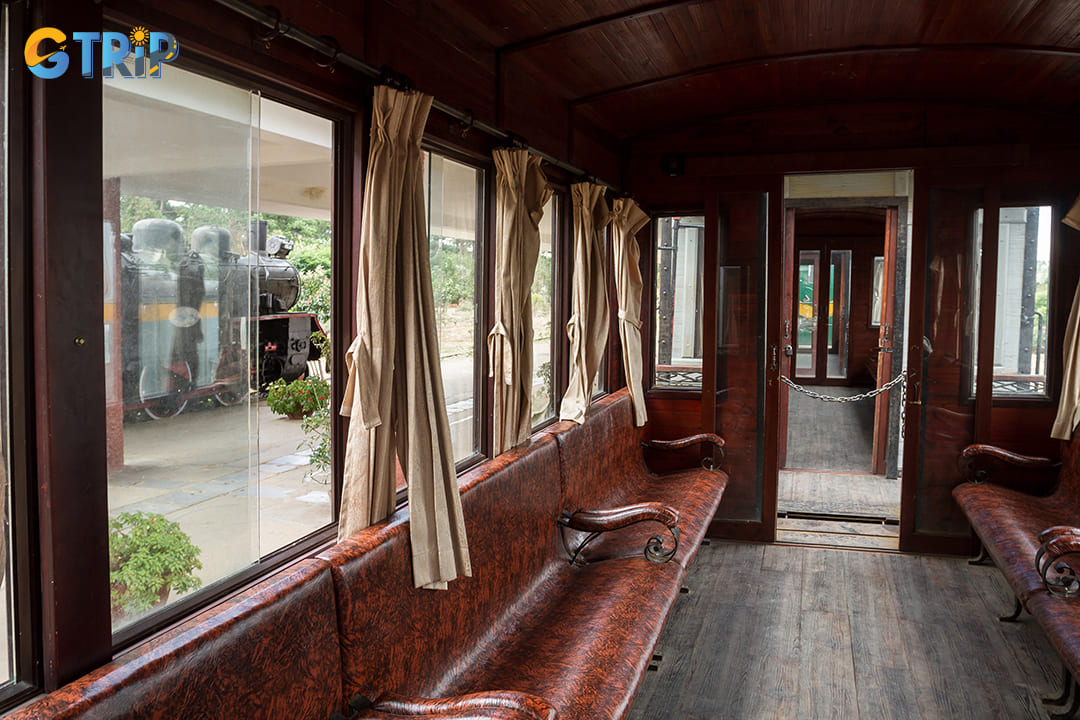
One of the main attractions near Dalat Train Station is the scenic railway journey to Trai Mat
2. Explore the station’s colonial design
The historical significance of the Dalat railway is evident in its unique architecture, inspired by the French Art Deco style. The station’s high, triangular roof is said to be a tribute to the Langbiang Mountains, a symbol of Dalat. Inside, you can admire the vintage wooden benches, old ticket counters, and well-preserved locomotives that once played a crucial role in Vietnam’s railway network. If you're a fan of history and design, the station itself is a museum worth exploring.
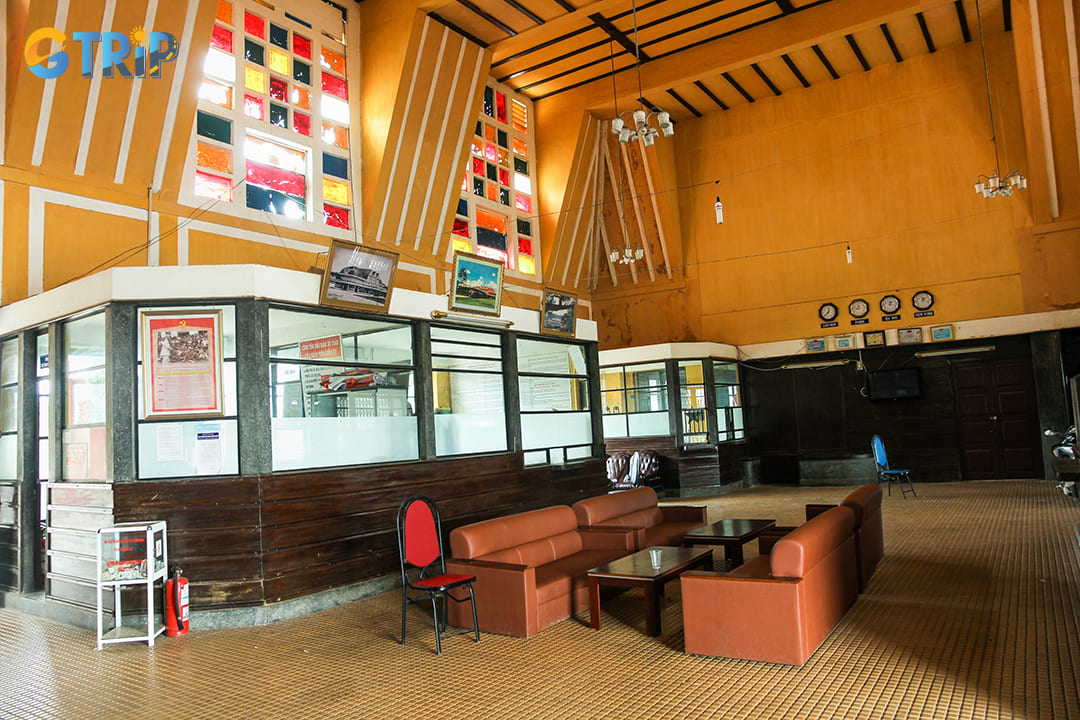
The historical significance of the Dalat railway is evident in its unique architecture
3. Photograph the historic architecture
For photography lovers, Dalat Train Station photos capture an iconic blend of colonial charm and vintage railway elements. The old steam locomotive displayed in front of the station is a favorite subject for tourists looking to document Dalat’s past. The contrast between the aged wooden train cars and the station’s bold ochre facade makes for a visually striking image. If you’re visiting in the late afternoon, the golden sunlight adds an extra layer of warmth to your shots.
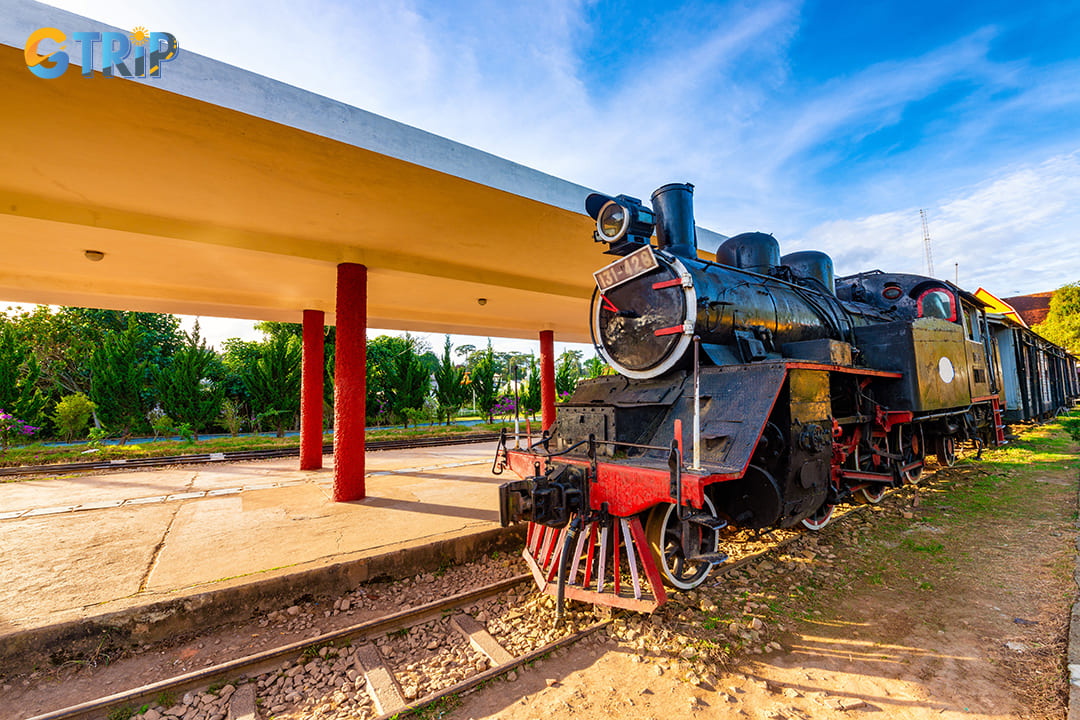
The old steam locomotive displayed in front of the station is a favorite subject for tourists
4. Visit nearby cultural landmarks
Just a short drive from the station, you can explore significant cultural sites like Linh Phuoc Pagoda, known for its intricate mosaic designs made from broken porcelain. Another must-visit is the Dalat Flower Garden, where vibrant blossoms create a picturesque setting for a relaxing walk. History enthusiasts can also check out the Summer Palace of Bao Dai, the former residence of Vietnam’s last emperor, showcasing regal artifacts and French colonial interiors.
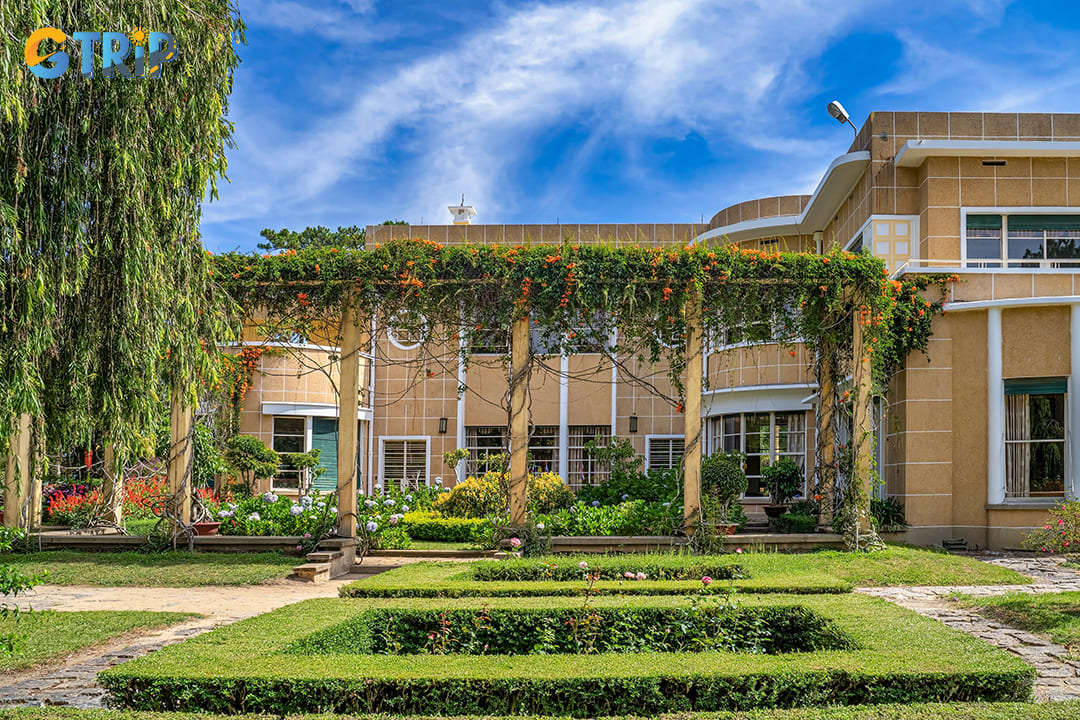
History enthusiasts can also check out the Summer Palace of Bao Dai
5. Enjoy local food stalls
After exploring the area, don’t miss the chance to try some authentic Dalat street food. Vendors near the station offer warm, comforting dishes such as “banh mi xiu mai” (Vietnamese meatball baguette) and “sua dau nanh” (soy milk), perfect for Dalat’s cool climate. If you have time, venture to the lively Dalat Night Market, where you can indulge in grilled sweet potatoes, avocado ice cream, and other local specialties.

You should try some dishes such as “banh mi xiu mai” (Vietnamese meatball baguette)
How to get to Dalat Train Station
Dalat Train Station is easily accessible through various Dalat transportation options. You can reach this historical landmark via taxis, motorbikes, private cars, or even a scenic walk.
1. By taxi or ride-hailing services
One of the most convenient ways to reach the Dalat Train Station location is by taxi or ride-hailing services like Grab. The station is situated about 2.5 kilometers from the central market, making the trip short and affordable. The ride takes approximately 10 minutes from most city-center hotels.
2. Renting a motorbike
For those seeking flexibility, renting a motorbike is a great way to navigate Dalat transportation routes. Several rental shops around the city offer bikes for daily use, allowing visitors to explore at their own pace. Riding through Dalat’s scenic roads, travelers can also make stops at attractions like the Dalat Flower Garden before arriving at the station. Parking is available near the entrance.
3. Walking from Dalat City center
Adventure seekers and photography enthusiasts might enjoy walking to Dalat Train Station. The route from the city center takes around 30 minutes, passing by tree-lined streets and French colonial villas. Along the way, you can take a detour to admire the unique architecture of The Cock Church (The Cathedral of Dalat City) before continuing to the station.
4. Public bus system
Although Dalat’s public bus system is not as extensive as in larger cities, some routes stop near the train station. Tourists staying farther from the center can check local bus schedules for the nearest drop-off point. However, taxis and motorbikes remain the more efficient choices.
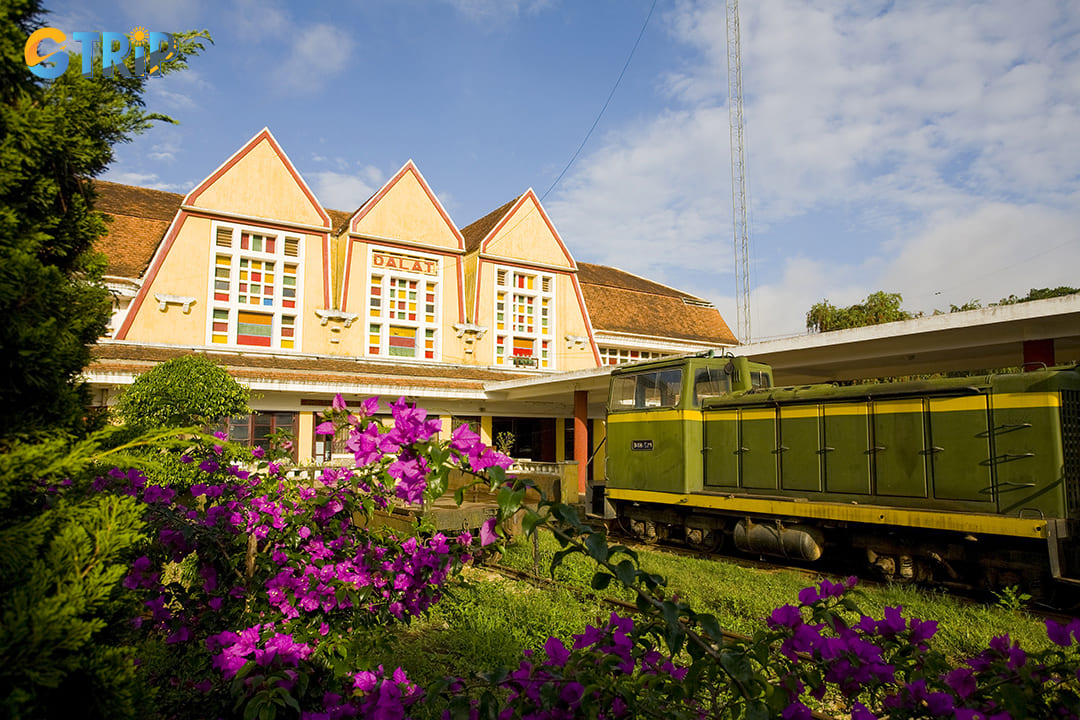
Dalat Train Station is easily accessible through various Dalat transportation options
Understanding how to get to Dalat Train Station ensures a smooth and enjoyable journey to this historical landmark. Once there, you can explore its colonial charm and take part in various activities. The station also serves as a gateway to nearby attractions, making it an essential stop before embarking on a Dalat scenic train ride to Trai Mat.
Dalat Train Station facilities and services
Dalat Train Station is a historical landmark and also a functional railway stop offering essential train station facilities to tourists.
Ticketing and train schedule information
The station provides a ticketing counter where you can purchase tickets for the scenic train ride to Trai Mat. The Dalat train station ticket prices are reasonably affordable, making it a popular attraction for both locals and tourists. While schedules can vary, the train typically operates multiple times a day, allowing flexibility in planning your visit.
Waiting area and passenger comfort
The waiting area is modest yet comfortable, designed to accommodate passengers before departure. While Dalat Train Station does not offer extensive modern amenities, it maintains a clean and well-maintained environment. You can find basic seating arrangements and shaded spots to relax before boarding their train.
On-site cafes and souvenir shops
Several small cafes and snack stalls are available, serving Vietnamese coffee and light refreshments. These provide a great opportunity to enjoy a drink while admiring the station's historical ambiance. Additionally, a few souvenir shops sell handcrafted items, postcards, and railway-themed memorabilia, making it a great place to pick up unique gifts.
Accessibility and visitor assistance
Although the station retains its historical design, efforts have been made to ensure accessibility for all tourists. The station staff is generally friendly and willing to assist with basic inquiries. English is spoken at the ticket counter, which is helpful for international travelers.
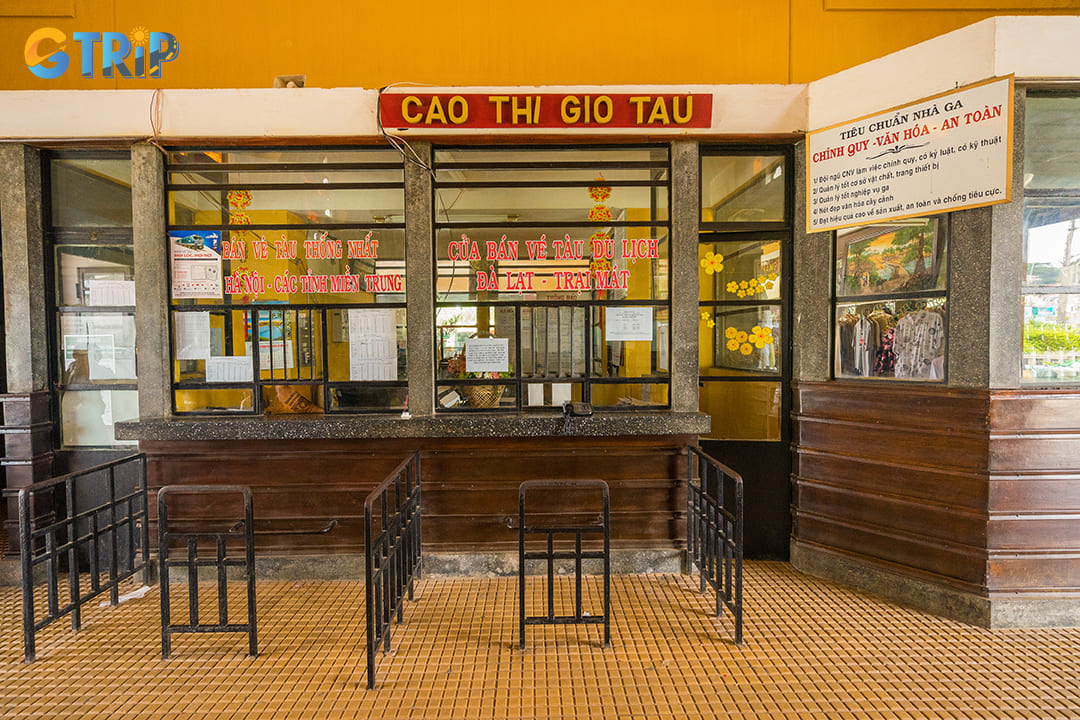
The station provides a ticketing counter where you can purchase tickets for the scenic train ride to Trai Mat
Other attractions near Dalat Train Station
Here are some nearby attractions that you can consider visiting when you finish exploring Dalat Train Station.
1. Lam Dong Museum
For those interested in Vietnam's cultural heritage, Lam Dong Museum offers an insightful look into the province's history, traditions, and ethnic diversity. Located just a short drive from Dalat Train Station, the museum houses over 15,000 artifacts, including ancient pottery, traditional costumes, and historical photographs. You can also explore a recreated ethnic village featuring the traditional stilt houses of the K’Ho and Ma people. This museum is an excellent stop for travelers wanting to learn more about Dalat’s rich past and its indigenous communities.
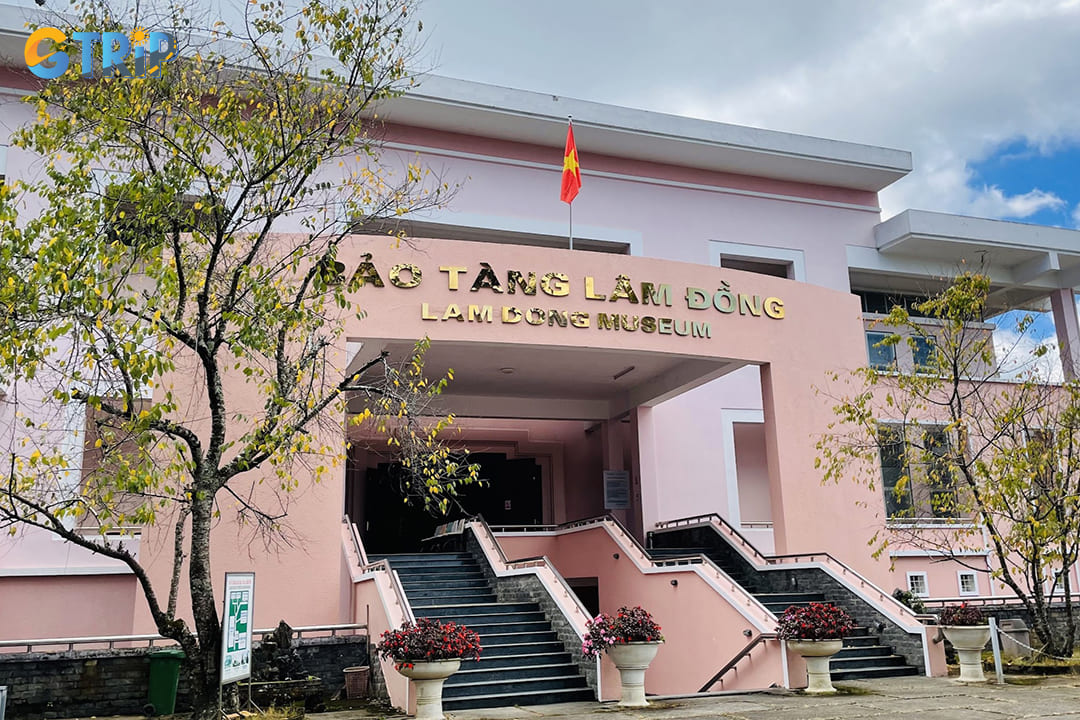
Lam Dong Museum offers an insightful look into the province's history, traditions, and ethnic diversity
2. Yersin Park
Situated along the picturesque Xuan Huong Lake, Yersin Park is a peaceful retreat perfect for a relaxing stroll. Named after the French scientist Alexandre Yersin, who made significant contributions to Vietnam’s medical and agricultural development, the park is adorned with well-maintained gardens, walking paths, and sculptures. It's an ideal spot for people to enjoy the cool Dalat climate while appreciating the scenic lake views.
3. Xuan Huong Lake
As the heart of Dalat, Xuan Huong Lake offers a tranquil setting surrounded by lush pine trees and charming cafes. You can take a leisurely walk around the lake, rent a swan paddle boat, or simply relax at one of the lakeside coffee shops. This artificial lake was created in the early 20th century and remains one of the city’s most iconic landmarks.
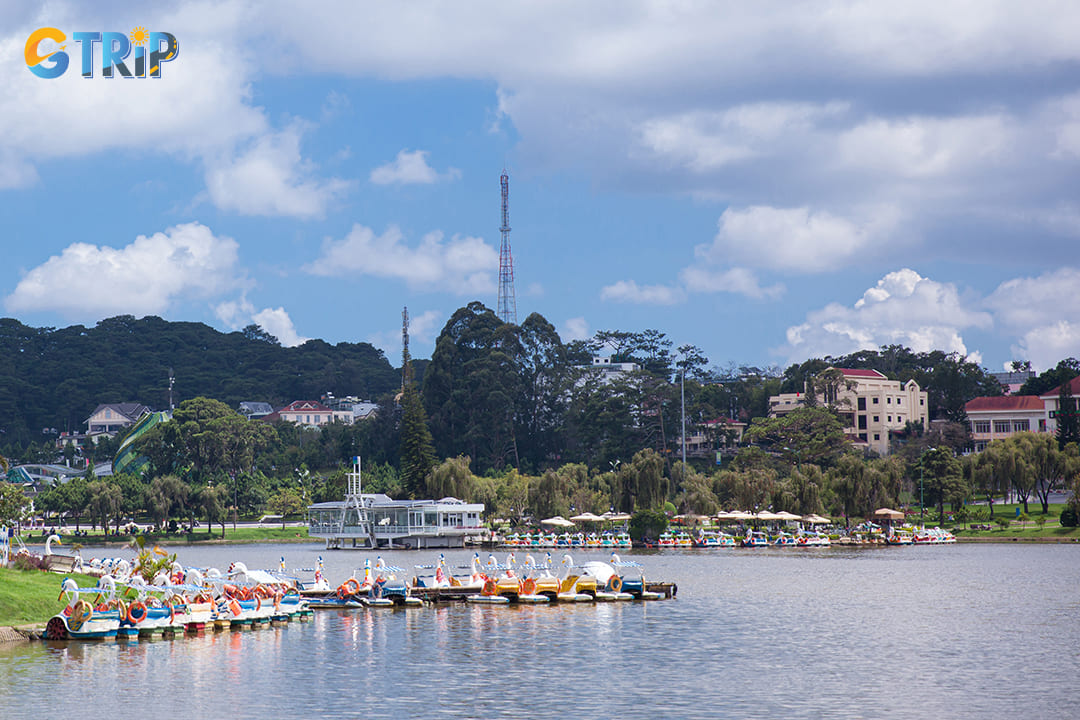
Xuan Huong Lake offers a tranquil setting surrounded by lush pine trees and charming cafes
4. Lam Vien Square
A modern attraction in Dalat, Lam Vien Square is known for its eye-catching architectural structures, including the giant glass artichoke-shaped building and sunflower dome. This vibrant square is a popular gathering place for both locals and tourists, offering open spaces for various recreational activities. It's also a fantastic location for capturing panoramic views of Dalat’s skyline.
5. Dalat Flower Garden
Renowned for its breathtaking botanical displays, Dalat Flower Garden showcases thousands of flower species from roses and orchids to hydrangeas and azaleas. Established in 1966, this 7-hectare garden is a paradise for nature lovers and photographers alike. During the annual Flower Festival, the garden transforms into an even more spectacular floral wonderland. After exploring the blooms, you can extend their journey to the Tuyen Lam Lake, a peaceful retreat known for its serene waters and pine-covered hills.
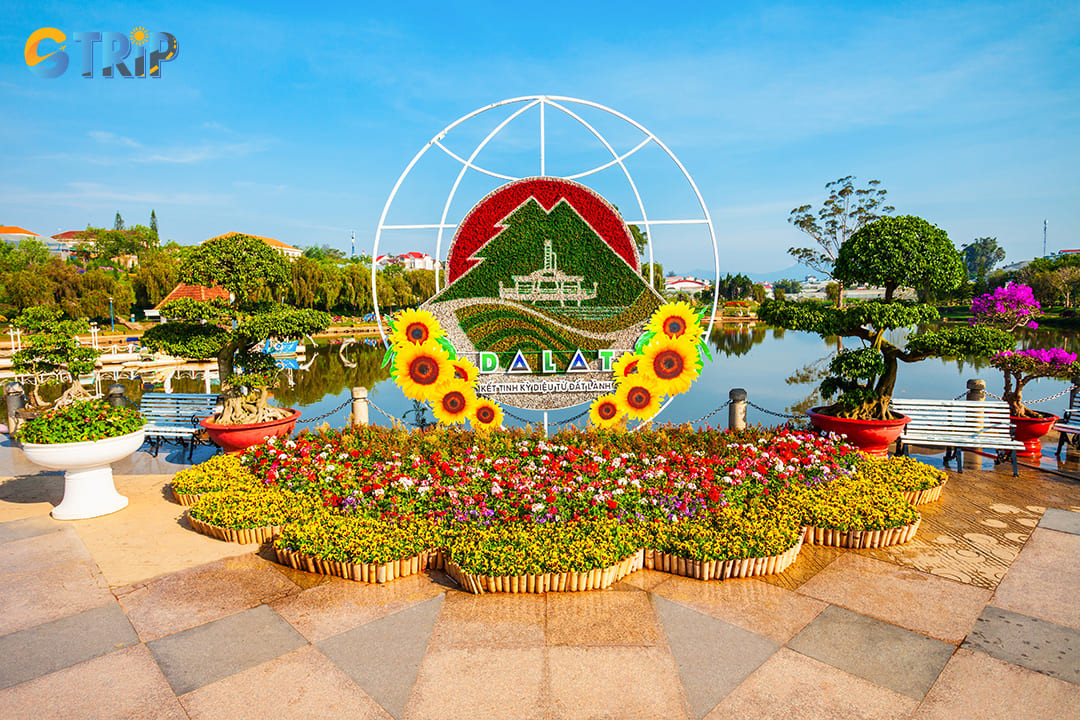
Dalat Flower Garden showcases thousands of flower species from roses and orchids to hydrangeas and azaleas
Dalat Train Station is a journey through time, showcasing the colonial architecture, scenic train rides, and rich heritage of Dalat railway history. This site offers a glimpse into Vietnam’s past while remaining a vibrant part of Dalat’s tourism scene. If you plan to visit, take the time to enjoy the scenic train route, explore the cultural landmarks nearby, and experience the nostalgic charm of one of Vietnam’s most historic train stations. For a deeper exploration of this charming city, consider discovering other must-visit attractions and curated travel experiences with Da Lat Tours by GTrip - Vietnam Travel Agency.

